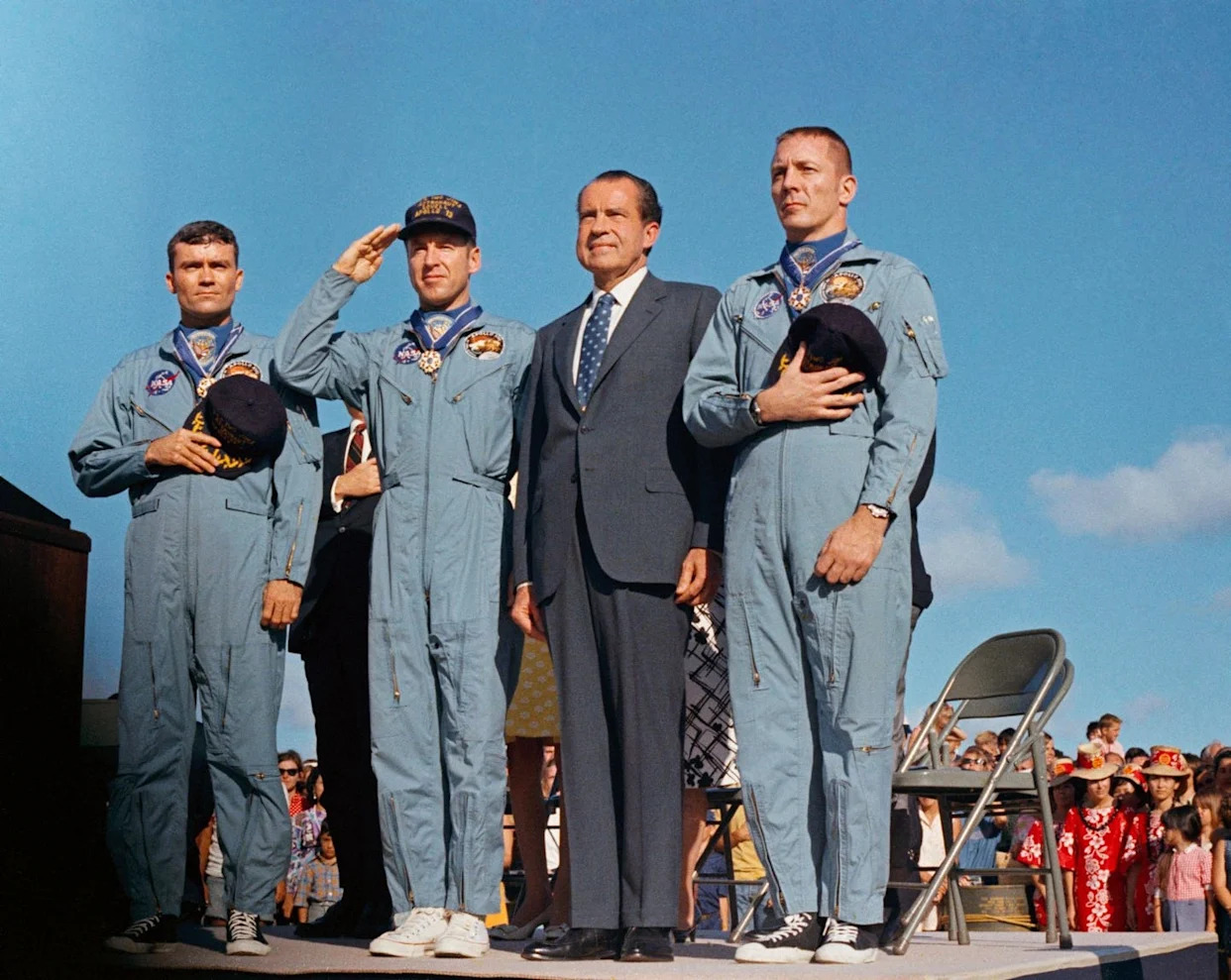**Astronaut Jim Lovell Criticized Early Apollo 13 Film as a ‘Diservice’**

The extraordinary rescue of the Apollo 13 astronauts following an onboard crisis in April 1970 captivated audiences worldwide, inspiring numerous accounts and adaptations. However, astronaut James Lovell, who passed away Thursday at age 97, harbored strong reservations about one early cinematic depiction of the harrowing ordeal. While he later collaborated on the acclaimed 1995 film Apollo 13, Lovell deemed a 1974 television movie a significant misrepresentation of events.
On April 11, 1970, astronauts Jim Lovell, Jack Swigert, and Fred Haise embarked from Florida’s Kennedy Space Center with the ambitious goal of landing on the moon. Just two days into their mission, that objective shifted dramatically to survival. An oxygen tank explosion crippled the Command Module, named Odyssey, jeopardizing the crew’s life support systems and power supply. Millions of Americans anxiously followed news reports as Lovell, Swigert, and Haise confronted plummeting temperatures and escalating carbon dioxide levels in the Lunar Module, their emergency shelter. Pope Paul VI even led a prayer for their safety on April 15th.
Through resourceful problem-solving and crucial support from Flight Director Eugene Kranz and his team at the Manned Spacecraft Center (now the Lyndon B. Johnson Space Center) in Houston, the astronauts managed to construct a makeshift carbon dioxide filter utilizing materials such as duct tape, cardboard, and a sock. This ingenuity proved vital as they finally splashed down safely in the South Pacific Ocean on April 17th, roughly 600 miles from American Samoa, an event watched by an estimated 40 million people according to The New York Times.
President Richard Nixon subsequently honored both Kranz and the Apollo 13 Mission Operations Team with the Presidential Medal of Freedom and presented the astronauts with similar accolades at Hickam Air Force Base in Honolulu, declaring the mission a success despite its failure to reach the lunar surface. “We are glad to be here, and we are glad to be a part of America,” Lovell remarked during the ceremony.
The narrative gained widespread public attention with a 1974 made-for-television film produced by Universal. Unusually for space mission depictions, this production focused primarily on the personnel working within Mission Control rather than showcasing the astronauts’ experiences. Despite NASA granting access to its facilities and allowing real employees to appear as extras, the agency declined creative control over the project.
The film deviated considerably from factual accounts, introducing fictionalized personal struggles among the Houston team – including a heart condition affecting the lead character and a custody dispute involving another. Universal attributed these alterations to network concerns about producing a documentary-style portrayal. “We took the basic facts and added additional drama on top,” explained Universal executive producer Herman Saunders, justifying the changes as necessary for maintaining audience engagement despite the known outcome.









